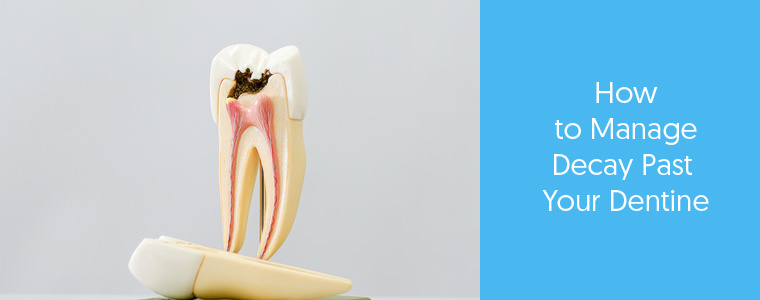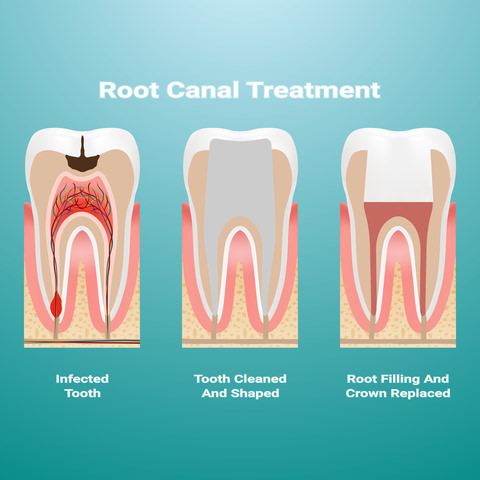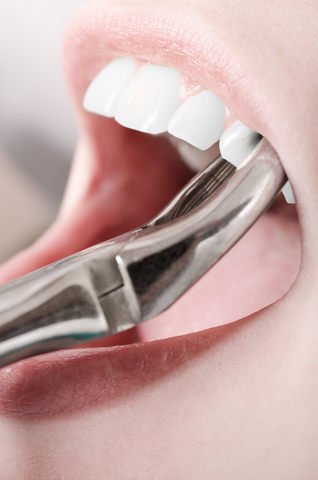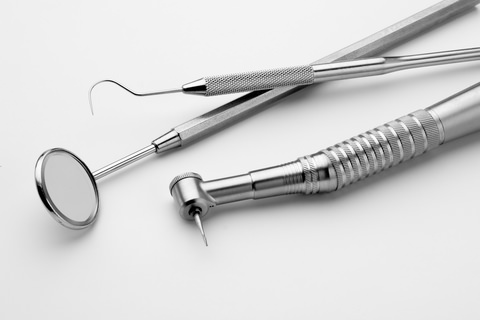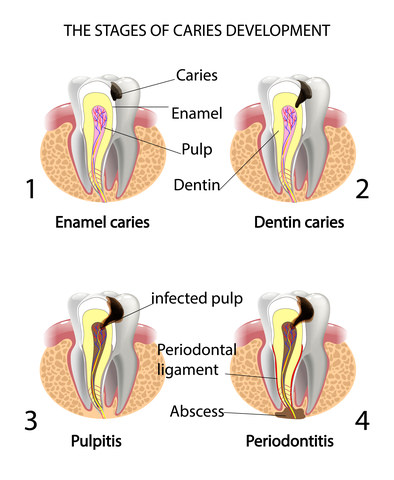Decay Is Past The Dentine: What Should You Do?
Tooth decay is one of my fears; I won’t lie.
So when Decay is past the dentine what should you do?
You have only two options when decay reaches your dentine:
1. Root canal
2. Complete extraction
These final options can be viewed as extreme but they can be necessary at some point.
In this post, I’m going to explore these two options and other ways you can prevent getting decay that affects your dentine.
Decay Getting Past the Dentine
Tooth decay getting past the dentine means that the cavity has reached your tooth’s pulp.
The first and foremost thing to note here is that this is going to hurt.
The pain is because of the cavity trying to find its way into the pulp.
The cavity releases bacteria that try to infect the pulp, causing it to swell.
This is also known as Pulpitis, a symptom of cavities.
The swelling pulp is unable to find a way out and is trapped inside the walls of the tooth, causing pressure on the walls and in turn, pain.
Root Canal Therapy
Although not all toothaches mean a root canal is necessary, the infected pulp is a definite recipe for one.
Due to its infection and risk of leaking harmful bacteria and toxins into the bloodstream, it’s an option your dentist will discuss with you.
As can be seen in the image above, root canal therapy involves your dentist removing the infected tissue from within your tooth. They then clean it and fill it.
Tooth Extraction
The other option is to get your tooth extracted. Again, there is a fear involved that it might be painful or expensive, but that isn’t the case.
Other than these two options, there are no other alternatives for you once decay passes beyond the dentine.
When performing these two procedures, it is not as simple as extracting the tooth or merely giving the patient a root canal.
It’s essential that all traces of the bacteria are cleaned out.
This can be done using a dental drill to reach the infected area and then cleaning whatever needs to be cleaned out.
For people who are interested in science, there are several promising ongoing research projects.
These projects are looking into growing natural teeth which might lead to repairing the dentine and the pulp.
Science is amazing!
What Exactly is Tooth Decay?
Tooth decay is a common problem all over the world, but one that is avoidable.
It is the breakdown of the tooth structure due to harmful bacteria and associated acids.
Sugar and starch-containing foods such as bread, milk, cakes, toffees, etc.
Left on the teeth are its primary cause, as the film of bacteria living on the teeth digest these foods and turn them into acids.
Combined with food debris, saliva, and bacteria, these acids form what’s called plaque, which later on dissolves the enamel on your teeth creating cavities.
These cavities keep dissolving through the enamel until it reaches the dentin and finally the pulp.
Stages of Tooth Decay
To better understand how a cavity gets past the dentine and how much time it takes, let’s have a look at the stages of tooth decay.
1. Strain Marks
The first stage involves the decay setting in as the bacteria releases acids harmful for the teeth using sugary and starch-containing foods.
These acids start demineralising the tooth, causing white spots that indicate strain on the teeth.
At this stage, the decay can be reversed by a dentist with ease, without the need for any major procedure.
2. Reaching the Enamel
As the surface of the teeth gets eroded, the acids and bacteria start attacking the enamel.
Teeth usually erode from the inside, which means that while the outermost enamel will still be intact, your teeth will start hollowing out.
The decay can be stopped here by having the cavity filled by a dentist and stopping the bacteria from getting food.
3. Reaching the Dentine
If the cavity continues beyond the enamel, it reaches the dentine.
This stage is associated with some degree of pain as the cavity eats the second level of the tooth, exposing the pulp.
The bacteria’s rampage can be stopped at this level by filling the cavity.
It is important to stop the cavity at this stage, or things might start getting more problematic and painful for the patient.
1. Attacking the Pulp
Upon getting past the dentin, the cavity then reaches the pulp, the core of the teeth; this is when things start getting painful.
At this stage, filling the cavity is no longer an option, and you are going to have to get either a root canal or a complete extraction.
1. Formation of Abscess
The final stage of tooth decay is when the cavity completely infects the pulp and reaches the root of the teeth.
At this point, the infection starts leaking abscess from the tip of the teeth and infects the surrounding bone structure and tissues.
The associated pain is severe and can be fatal if not treated immediately.
The standard treatment for this is to remove the teeth and all associated infected tissue.
Bones also need disinfection, which is a long and hard procedure.
It also takes a toll on you as the patient as you can’t move your jaw normally for the time it takes to heal.
Tackling Decay on the Dentine
While it may be difficult to deal with decay, there are several ways to tackle decay on the dentine.
Detection
If you somehow missed the white spots on your teeth, it gets fairly easy to find tooth decay at a later stage.
Symptoms of tooth decay reaching the dentin include:
- Spontaneous toothaches.
- Tooth sensitivity to hot or cold and associated with pain when eating or drinking.
- Visible holes in the centre of the tooth.
- Stains on the surface of the tooth.
Remedies
There are a few proactive measures that one can take to avoid decay reaching the internal areas of your teeth.
Here are 4 ways to slow and potentially stop decay increasing:
Filling
One of the more common solutions, so you can tackle decay reaching the dentine, is to have the tooth filled.
The filling would stop the bacteria and acids from further dissolving the dentin by stopping them from getting any food.
Other solutions include:
Remineralisation
Remineralisation of teeth is a process that usually occurs naturally in the oral cavity on a daily basis, through saliva.
In this process, calcium and phosphate ions are deposited onto the demineralised spots on your teeth.
They maintain the dentin and enamel composition.
One way to remineralise teeth is to use a tooth mousse, a sugar-free remineralising dental cream.
Another technique called Electrically Accelerated and Enhanced Remineralisation is under research right now for quick remineralisation of teeth.
This technique involves slightly electrifying the patient’s teeth to attract the essential minerals quickly to heal and restore your teeth’s original strength and structure.
This technique is still a few years off, but Australia and Great Britain might see it used within the next one or two years.
Therapeutic Biomaterial
Although this technique is still in its research phase, using a therapeutic biomaterial is a very promising solution. It aims to help heal dentin and fight off cavities effectively.
The technique theorises about the use of biomaterial, a material that can stimulate specific stem cells in the gum tissues to produce dentin-producing cells.
The biomaterial can be injected easily into the gums like fillings.
It then cauterises to form a plastic material, which will interact with the patient’s cells to trigger the production of dentin.
This technique still has some issues that need to be worked out, so it might take some time to be available to the public.
Dietary Remedies
Eating a healthy, balanced diet will help with reducing decay over a more extended period.
If this is something you are interested in, try eating these 7 types of foods for healthy teeth:
- Cheese.
- Fish.
- Oranges.
- Carrots.
- Leafy green salads or vegetables.
- Tea.
- Dark Chocolate.
You should avoid sugary and starch-containing foods as this feeds the bacteria in your mouth.
What if I Let My Teeth Decay?
Many people don’t go to the dentist, even after finding out that there is something very wrong with their teeth.
This is usually because of reasons such as:
- Busy schedules.
- Fear of dentists.
- High expenses.
Those 3 reasons are a concern for most but the fear or anxiety you feel now is probably going to be much less than if decay starts developing.
If tooth decay is allowed to continue, once the infection reaches the pulp, it will most likely cause unbearable pain.
At that point, it might be too late to save your teeth, and that is bound to cost you more than a simple filling.
Also, there is a high risk that the cavity or infection might jump from one tooth to another and cause undue inconvenience!
Am I Safe After Getting a Root Canal or Extraction?
After getting the decay cleaned and having the relevant procedure performed, it is not the end of your problems, unfortunately.
It is very probable, especially right after, that the bacteria may return and start causing problems again.
Looking after your diet and maintaining your teeth regularly is hugely important.
Once this problem arises, even after you get it fixed, there is a weak point in your teeth that the bacteria can, and will exploit.
Proper maintenance through brushing, flossing, eating low acid food, and drinking lots of water can help.
Keeping these things in check and ensuring that your teeth stay healthy is an excellent way to skip over tooth decay.
Conclusion
Tooth decay that reaches your tooth’s dentine is preventable.
It’s important to understand that cavities or tooth decay don’t just happen overnight.
They do take a lot of time to fester and progress, so you have time on your sign if you act and prevent.
While it may prove difficult for you to remove this bacteria yourself, a simple bi-annual visit to your dentist can save you a lot of trouble, time and money.
So book that dental checkup and take tooth decay head on!
By Dr Veronica Roller
Created at October 23, 2018, Updated at October 13, 2021


